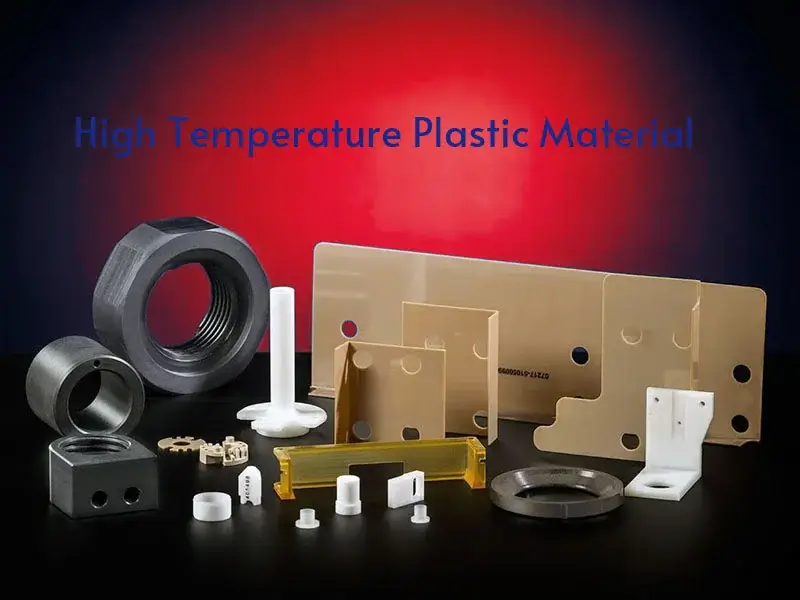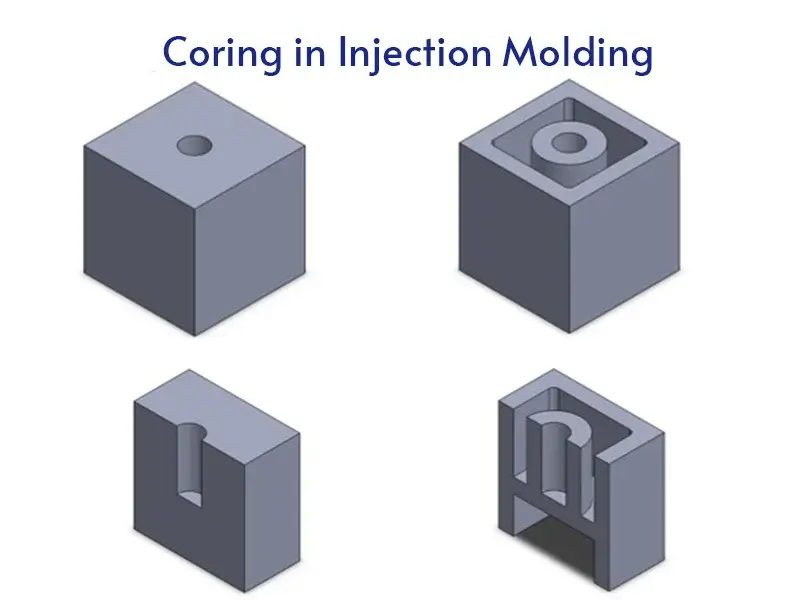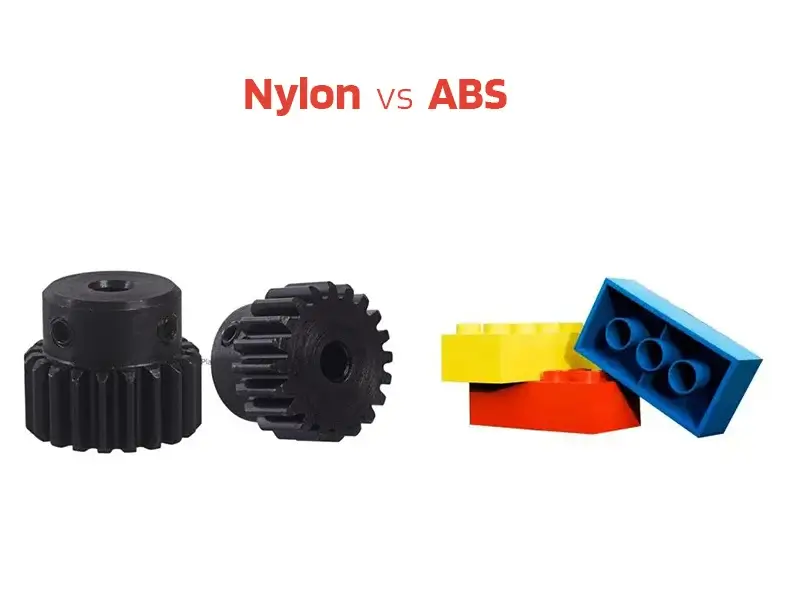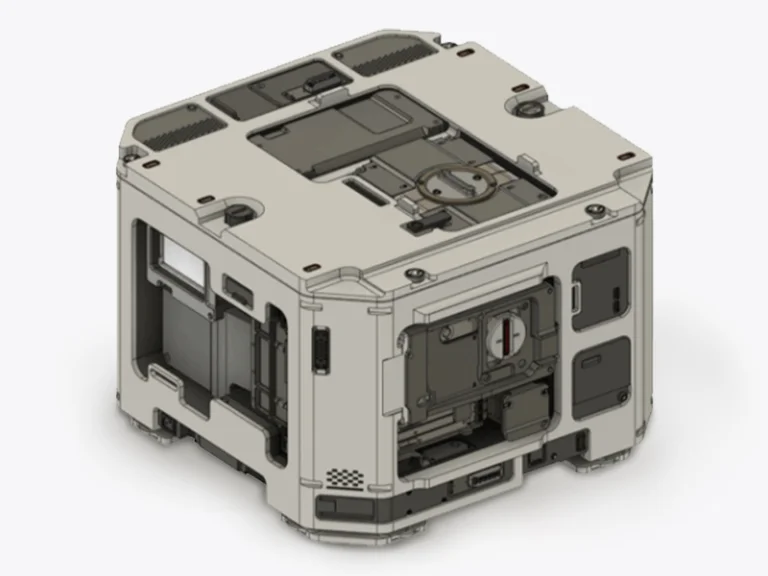Injection molding ejector pins are important part of injection mold. In the Injection Molding process, the ejector pins are responsible for efficiently and reliably ejecting molded parts from the mold cavity. Ejector pin has facilitated the automation of the injection molding process, improved production speed, and ensured more efficient products. In this post, we will introduce how injection molding ejector pin works and how to choose the right ejector pin in the injection molding process.
What are Injection Molding Ejector Pins?
An injection molding ejector pins are small, cylindrical components typically made of hardened steel or other durable materials. It is a component of the ejection system that pushes the molded part out of the mold cavity after cooling and solidification. It is a crucial mechanism that facilitates efficient removal of the finished part from the mold.
How Does an Injection Molding Ejector Pins Work?
Injection molding ejector pins play a crucial role in the ejection process of injection molding by pushing the solidified molded part out of the mold cavity.
The injection mold consists of two halves, typically referred to as Side A and Side B. The ejector pins are located on Side B of the mold.
After the molten plastic is injected into the mold cavity and cools down to solidify, the mold opens by separating Side A and Side B. Then ejector pins are actuated, either mechanically or hydraulically, depending on the mold design and machinery. This actuation causes the pins to extend into the mold cavity, applying force against the molded part. The ejector pins push the part out of the cavity, facilitating its release from the mold.
Once the part is ejected, the ejector pins retract, allowing the mold to close for the next molding cycle.
The ejection process facilitated by the ejector pins is automated, increasing production efficiency and speed.
The number, size, and placement of ejector pins depend on various factors, including the part’s geometry, material properties, and production requirements.
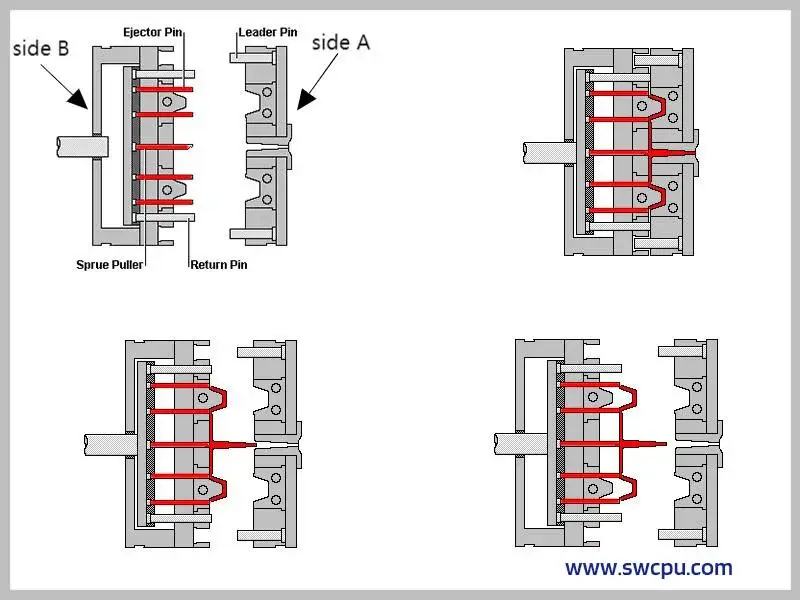
8 Types of Injection Molding Ejector Pins
There are several types of ejector pins used in injection molding, each suitable for different temperature ranges and applications:
Through-Hard Ejector Pins
They are made from high-quality steel that has undergone heat treatment to ensure uniform hardness from the tip to the base of the pin. The heat treatment process allows Through-Hard Ejector Pins to withstand temperatures up to 200°C (392°F). They are commonly used for plastic injection molding applications due to their ability to handle the typical temperature ranges involved.
The consistent hardness throughout the pin diameter provides wear resistance and durability during the repetitive ejection cycles in the molding process.
Nitride H13 (Case-Hardened) Ejector Pins
Nitride H13 (Case-Hardened) Ejector Pins are a type of ejector pin used in injection molding that has a surface hardening treatment applied to them.
They are made from H13 tool steel, which is known for its excellent heat resistance. The pins undergo a nitriding process, which is a case-hardening treatment that introduces nitrogen into the surface layer of the steel. This nitriding process increases the surface hardness of the pins to 65-70 HRC (Rockwell Hardness Scale), while the core remains relatively softer.
The high surface hardness allows Nitride H13 pins to withstand temperatures up to 600°C (1112°F), making them suitable for die-casting and metal injection molding applications.
The hardened surface provides excellent wear resistance and improves the pin’s durability during the repetitive ejection cycles.
Black Ejector Pins
Black Ejector Pins have a black coating applied to the surface, typically made of materials like diamond-like carbon (DLC) or physical vapor deposition (PVD) coatings. This black coating makes the pins self-lubricating, reducing friction and wear during the ejection process.
Black Ejector Pins can withstand temperatures up to 1000°C (1832°F), making them suitable for high-temperature metal injection molding applications. They are often used as a replacement for Nitride H13 (case-hardened) pins when working temperatures exceed 600°C, which is the upper limit for Nitride H13 pins.
They are commonly used in automotive molds and other applications involving high-temperature molding of metals or engineering plastics.
Straight Ejector Pins
Straight ejector pins are one of the most common types of ejector pins used in injection molding. They have a simple cylindrical shape and are designed for straightforward ejection of molded parts with relatively simple geometries.
Straight ejector pins are typically made from high-quality steel alloys like H13 tool steel or high-speed steel (e.g., SKH51) for durability and wear resistance. They may undergo heat treatment or surface hardening processes to enhance their performance and longevity.
Easy to install and maintain due to their straightforward construction. Suitable for a wide range of injection molding applications involving plastic materials.
Shoulder Ejector Pins
Shoulder ejector pins are a specialized type of ejector pin used in injection molding to aid in the efficient ejection of molded parts from the mold cavity. They have a distinct design with a larger diameter at the top (shoulder) and a smaller diameter at the tip.
The injection molding shoulder ejector pins are typically made from high-strength steel alloys like H13 tool steel for durability and wear resistance. They may undergo surface treatments like nitriding or coatings for enhanced performance.
Blade Ejector Pins
Blade ejector pins, also known as flat ejector pins, are specialized components used in injection molding to aid in the removal of molded parts from the mold cavity. They are flat and wide tips. This flat, blade-like profile allows for a larger surface area to contact the molded part during ejection. They are particularly useful for ejecting parts with deep, narrow cavities or intricate geometries that may be challenging for round pins.
The blade ejector pins are typically made from high-quality steel alloys like H-13 steel, chosen for durability, heat resistance, and wear characteristics.
7.Two-Stage Ejector Pins
Two-stage ejector pins are a specialized type of ejector pins. They have two distinct diameters along the length of the pin – a larger diameter at the top and a smaller diameter at the tip. During ejection, the two diameters allow for a two-stage ejection motion.
First, the larger diameter portion pushes the part partially out of the cavity. Then, the smaller diameter tip extends further to complete the ejection process gradually.
They are useful for ejecting delicate, thin-walled, or intricate parts that may deform or damage under sudden ejection force.
Suitable for parts with undercuts, ribs, or complex geometries that require a controlled, multi-stage ejection.
Floating Ejector Pins
They are designed with a degree of movement or “float” to allow for slight dimensional variations in the molded part. The floating ejector pins are useful for ejecting parts with tight tolerances or where dimensional variations are expected due to factors like material shrinkage or thermal effects. They are suitable for parts with undercuts, ribs, or complex geometries that require precise ejection forces.
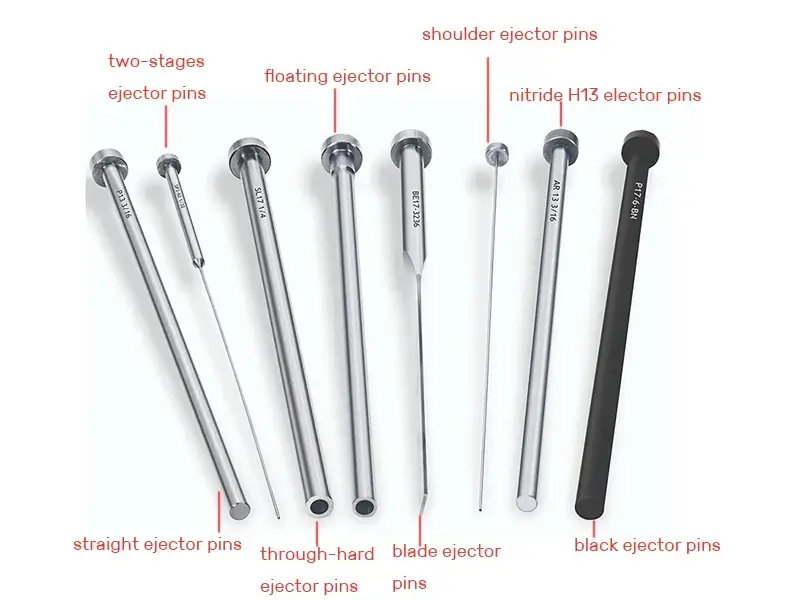
How to Choose the Right Ejector Pins in Injection Molding?
To choose the right ejector pins for an injection molding process, you must consider several factors like part geometry, molding material, surface requirements and mold design, etc.
Part Geometry and Complexity:
For parts with simple geometries and shallow cavities, straight ejector pins may suffice.
For parts with deep cavities, ribs, undercuts or intricate features, specialized pins like shoulder pins, blade pins or two-stage pins are recommended to prevent damage during ejection.
Molding Material and Temperature Requirements:
Through-hard ejector pins are suitable for most plastic injection molding applications up to 200°C.
For higher temperature applications like die-casting or metal injection molding, nitride H13 (case-hardened) pins or black ejector pins are used, capable of withstanding temperatures up to 600°C and 1000°C respectively.
Surface Finish and Appearance Requirements:
For parts requiring an excellent surface finish or where ejector pin marks are undesirable, blade ejector pins or ejector sleeves can be used to distribute the ejection force over a larger area.
Floating ejector pins can accommodate slight dimensional variations and reduce ejector pin marks.
Part Dimensions and Wall Thickness:
Thinner wall sections may require shoulder pins or blade pins to prevent deformation during ejection.
For very thin or delicate parts, two-stage ejector pins facilitate a gradual, controlled ejection process.
Mold Design and Ejection System Layout:
Proper placement, alignment and clearance of ejector pins are crucial to ensure smooth ejection without binding or damage.
The number, size and arrangement of pins depend on the part geometry, draft angles, undercuts and ejection force requirements.
Conclusion
The injection molding ejector pins are critical in the overall manufacturing operations. Depending on the different mold designs, manufacturing processing, and parts complexity, there are several types of injection molding ejector pins types. Manufacturers can ensure smooth production processes, high-quality finished parts, and efficient use of resources by choosing the right ejector pins.

